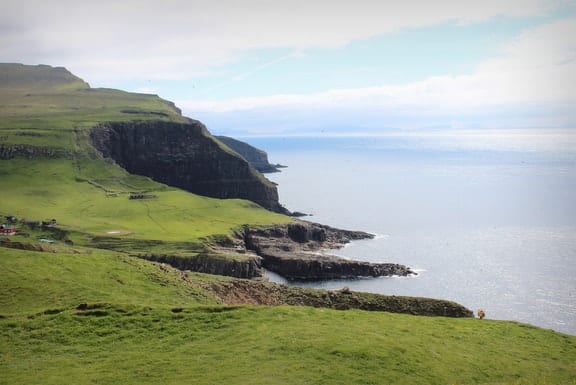
The Faroe Islands are famous for their exquisite beauty and isolation. Yet of all the islands and villages and regions, one place stands out as the most unspoiled, most unique, and perhaps even the most beautiful.
That place is a little island called Mykines.
Mykines (pronounced MEE-chin-ness) is the westernmost point in the Faroe Islands, and a popular destination for the Faroese. There is no bridge or tunnel leading there, so you must travel either by boat or helicopter from neighboring island Vagar.
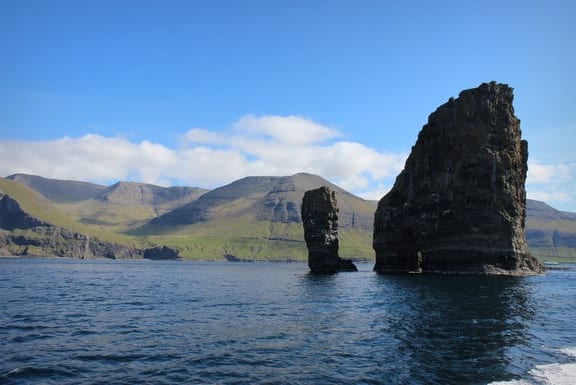
I arrive by boat and meet Harald, a septuagenarian guide with the legs of a mountain goat. Right away, he takes me up a hill; an hour later, I realize we’re in the middle of a four-hour hike.
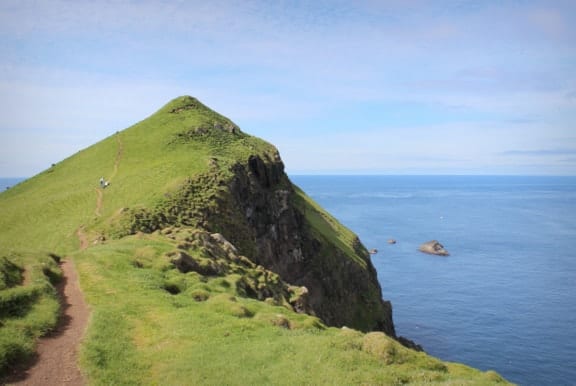
The landscape is breathtaking. For what seems like the hundredth time in the past few days, I marvel at the scenery before me. How can a place this beautiful be completely unknown to most of the world?
Sure, Mykines is incredibly to look at. But it has something the other islands don’t: THOUSANDS OF PUFFINS!
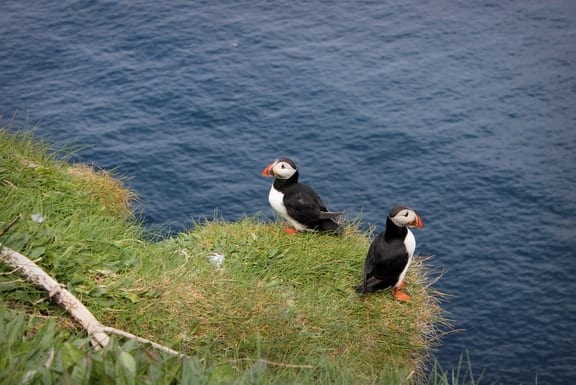
How cute are these little critters?
You see puffins throughout the Faroe Islands, mostly from a great distance. But on Mykines, you can sidle up right next to them.
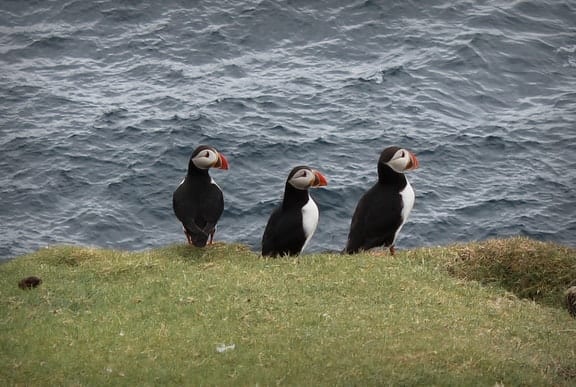
I quickly fall in love with three adorable puffins whom I name the Three Stooges. It takes a while, but eventually they all turn their heads in the same direction!
The hike on Mykines leads us up and down steep hills surrounded by thousands of puffin holes. This is one place not to step off the path.
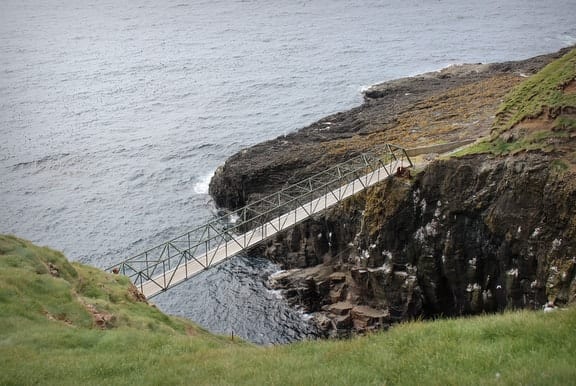
Joining Mykines to its westernmost half, Mykineshólmur, is a bridge built over the inlet, or Holmgjogv. This bridge was built in 1909 and is one of very few of its kind in this part of the world.
Harald turns to me as we make it to the other side. “We just crossed the North Atlantic,” he says with a nod.
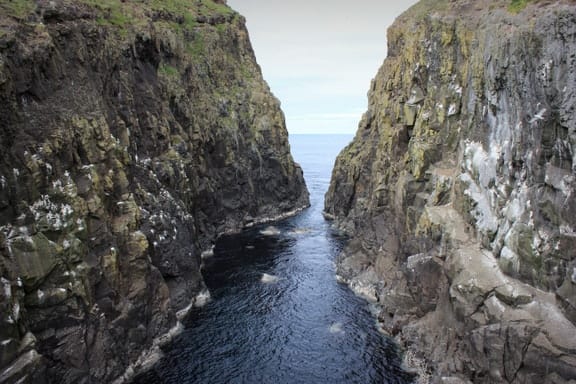
We continue our hike — up hills, past sheep, and finally to a lighthouse looking out into the vast expanse of nothing. The closest land is Iceland. Here, I’ve finally made it to the end of the world, I think to myself.
The hike back takes us along the same route. At this time, I learn that puffins, while adorable, can also be quite scary.
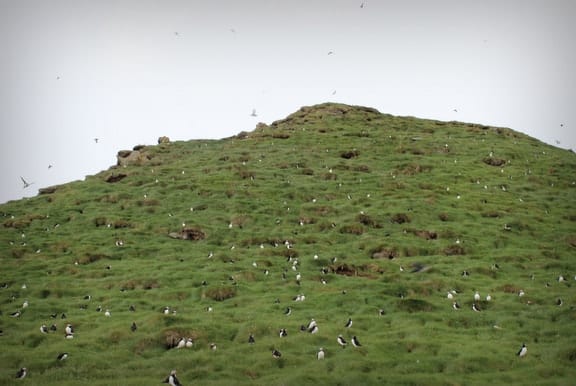
One of the puffins gives some sort of signal, and suddenly they are swarming in the air, flying in every direction, nearly divebombing the few hikers on the path on the hill.
You don’t know fear until you’ve seen thousands of puffins swarm at once around you.
We make it back to Mykines village, and Harald congratulates me. “I like hiking with young people,” he tells me. “We hiked in three hours…older people, it takes four.”
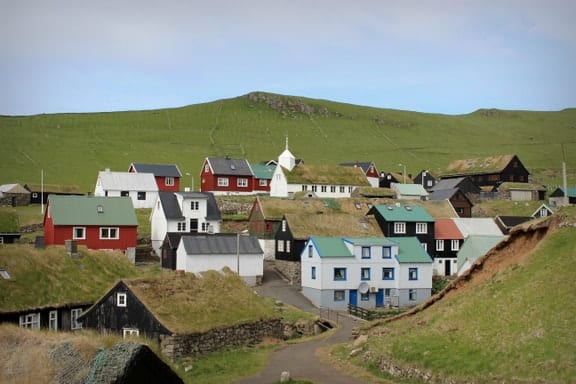
Back in town — the cluster of houses at the bottom of the hill — I wander the streets, admiring the brightly painted houses and traditional grassy roofs.
While cruise ships occasionally stop here, bringing as many as 500 people on the island at any given time, only 10 people live here year-round. There is a tiny schoolhouse, and it is attended by exactly one child.
Could you imagine in such a small place? As beautiful as it is, being so far from everything could take a huge toll — particularly during the cold, dark winter.
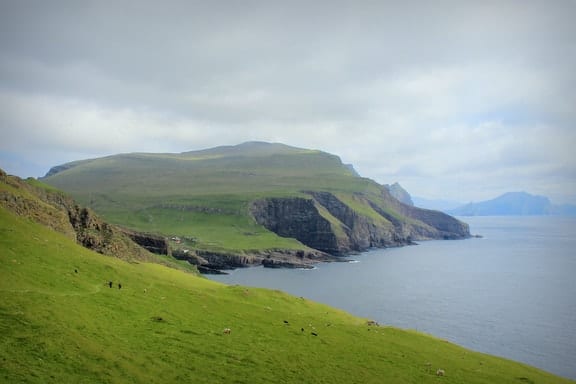
A few years ago, National Geographic Traveler named Mykines the world’s best island, putting it on the map for the first time ever. The magazine chose Mykines for the reasons I’ve mentioned earlier: the beauty, the unspoiled nature, the isolation. It goes to show that not all perfect islands have to be situated in a warm climate!
The Faroese are very proud of this honor. But even after the recognition that comes with a major travel magazine cover, Mykines is still largely unknown to the masses, as are the Faroe Islands as a whole. This fantastic island will remain secret to only those in the know.
Consider yourself among those privileged few.
Many thanks to Visit Faroe Islands and Travel PR for hosting my trip to the Faroe Islands. All opinions, as always, are my own.
Comments
Post a Comment